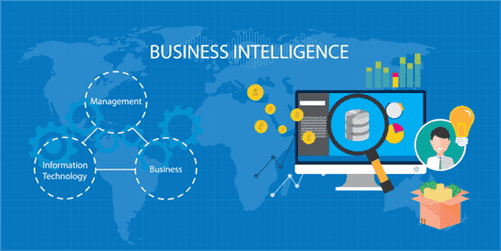Unlocking Networks: The Present And Way Forward For Embedded Finance
We anticipate rapid growth via 2026, with a fivefold increase in embedded B2B lending, bringing the loan quantity to between $50 billion and $75 billion, or around 15% of the total, which may even rise slightly to round $430 billion. The enablers monetize through a discount rate on the whole transaction value that they cost to the service provider. Over the previous five years, BNPL has proliferated throughout e-commerce platforms, alongside the rise of unicorn enablers Affirm, Klarna, and Afterpay. Catalyzed by pandemic lockdowns, BNPL and PoS lending proved helpful for consumers to access items and services, even when they didn’t have all the cash required on the level of buy. By 2026, we count on B2B payments to achieve $33.3 trillion, with embedded payments taking a considerably larger share as buyers shift to eCheck, digital playing cards, and value-added ACH to streamline operations and simplify AP/AR reconciliation.
Embedded finance will proceed to grow as some areas are nonetheless in the early stages. More sectors would possibly provide embedded finance as shoppers search for the comfort of those companies. Around 65% of businesses surveyed don’t presently supply embedded finance companies but plan to assume about adding these providers, according to a report from Juniper Research. As payment volumes grow at a wholesome clip, banks must handle funds cohesively to retain buyer loyalty and increase into different offerings.
- These fintech companies build insurance coverage choices into the checkout flow, enabling consumers to choose insurance coverage as an ‘add-on’ to their purchase.
- Embedded finance reaches underserved populations by forging partnerships with technology and e-commerce platforms, fostering monetary inclusion.
- Catalyzed by pandemic lockdowns, BNPL and PoS lending proved useful for consumers to entry goods and services, even when they didn’t have all the cash required on the level of buy.
- As we survey the aggressive panorama, platforms will proceed to serve as the prime owner of the shopper relationship, taking an rising share of the embedded finance profit pool.
- In the lengthy run, this would possibly include with the ability to discuss shares in a chat room after which simply buy shares or permitting customers to purchase stocks in their checking account app.
To make sure, a lot progress has been made – but we’re nonetheless very a lot firstly of this opportunity. The promise – and problem – of embedded finance is to move all of this into software in a means that enhances the power to serve the customer. It’s not about merely extending credit score, however decreasing the friction between problems and solutions in B2B. After years of progress, nonetheless, the embedded finance ecosystem has finally reached a critical mass — giving us just enough items to glimpse the finished puzzle. If you store online, you’ve likely interacted with (or at least seen) embedded finance, most commonly within the type of the Buy Now, Pay Later button that has turn into all but ubiquitous during on-line checkout. Though just one instance, today, the overwhelming majority of embedded finance merchandise are B2C, owing to a shopping for journey that’s simpler and far simpler to digitize.
What’s Embedded Finance?
For so lengthy as we’ve had banks, they’ve been basically separate from business. Banks are singular institutions, operating in their very own buildings — away from the place we run our companies. “To the extent that [partnering on embedded finance] turns into infinitely profitable, then companies have the flexibility to construct themselves out of that partnership,” added Randklev. Embedded finance has the potential to revolutionize the way software program platforms and marketplaces function. Effective cost operations encompass a full lifecycle, well beyond fee initiation, approval, and tracking.

Succeeding in this fast-changing panorama requires adaptability and innovation. Embedded finance is greater than only a trend; it is a big transformation in finance, and its influence will solely develop sooner or later. Taking embedded finance seriously will set businesses up to journey the wave of the brand new frontier in international FinTech, and reap the rewards of the means forward for finance. Until comparatively recently, the technology to simply plug financial services or products into your business merely didn’t exist. It wasn’t until the early-to-mid 2010s that the trade started to see the rise of “platformification” — a model new business model that permits a company’s core service to be utilized as a element of another firm’s broader proposition. The business model was initially embraced by fintechs and the developer neighborhood as a result of significant execution risk reduction and velocity to market benefits.
Bauke Sprenger is a leader within the buyer and operations follow for financial companies consulting in the Netherlands. He helps banks in improving their core enterprise processes and working models. Bauke is an active member of the fintech and new entrants neighborhood for PwC EMEA, and the method forward for banking neighborhood. Financial gamers that expect fintechs and big-techs to backtrack from their initial efforts to achieve market share or to enter the monetary services house in the first place, will likely be disenchanted.
Platforms Select Their Companions
A lot of companies grew rapidly, providing aggressive traces of credit score to their clients. Most differentiated based mostly on distribution – going to the place the shopper was – which they cited as the premise for a slight markup over bank charges. To the extent that their providing was online, it was often a skinny digital layer on top of financing, whereas money was the real product. Financial providers and brands will forge lasting (and extremely beneficial) partnerships.
Tom is a fintech industry writer who creates whitepapers and articles for Plaid. He’s passionate concerning the freedom that the union between monetary companies and expertise can create. The benefits of embedded fintech reach everybody concerned in these fund flows, together with finish customers and companies. In the present moment, fixing buyer ache points with focused, deep worth merchandise is extra essential than ever. As a half of these merchandise, customers want seamless payment experiences which would possibly be quick and clear.
What’s Embedded Finance? 4 Methods It Will Change Fintech
Indeed, how regulators reply to this taking place is presently being worked out and will require international cooperation. Rainforest helps software corporations embed financial merchandise into their options. Now, prospects can spend cash on cryptocurrency with platforms they already use — corresponding embedded payments examples to PayPal or Venmo. Consumers are on the lookout for and anticipating sites to supply additional companies in a means that a brilliant app would, the place folks can perform multiple tasks on one platform.
This course of is finished with out the need to route these companies by way of conventional financial institutions and uses companies similar to Affirm, Afterpay, Klarna and Uplift to finance a product buy as an alternative. Looking at industries, retail and e-commerce platforms kind the lead use cases. They’re extremely digitized, with universally accepted checkout and payment choices.
We all wish to be comfy in the data that each our finances, and the providers we interact with, are protected. The financial panorama has all the time been a goal for bad actors, and embedded finance presents a recent alternative to deal with this drawback head-on. Embedded finance suppliers have a responsibility to develop methods that defend vulnerable people, and fight potential attacks https://www.globalcloudteam.com/ earlier than they’ve happened. Although some financial institutions operate with channel partners, many are accustomed to serving finish customers immediately. Those utilizing direct channels will need to construct a brand new set of capabilities to help distributors in promoting embedded-finance products to their consumer or enterprise prospects. Nevertheless, specific ambitions of embedded finance will undoubtedly seize the attention of regulators.

If you’re unable to serve up compelling financial products, then you’re just constructing software program for the sake of constructing software, which is okay, but a unique enterprise and vision. Instead, purpose to deliver software and financing collectively, whereas preserving the former the key sauce. The application of embedded finance will enhance in parallel with the advance of worldwide ecommerce markets. According to Statista, the sales figure of e-retailers exceeded US$5.2tn globally in 2021 and is projected to proceed hovering within the coming years.
Embedded banking sometimes makes essentially the most sense for sellers or service providers utilizing a company’s platform to conduct enterprise. It doubtless offers faster access to funds and perks that solely platform users can entry. One sector that banks and fintechs want to monitor and proactively handle is cybersecurity.

Dmitry Dolgorukov is the Co-Founder and CRO of HES Fintech, a leader in offering financial institutions with intelligent lending platforms. They have a glance at the same value propositions and ask how they’ll do it differently. At Activant, we’re excited by these shaping the future of embedded finance, and with it, commerce as a whole.
Direct checking account payments from customers spare the retailer from having to pay additional prices to credit card processors. Businesses can hold all the funds on their very own platform to permit them to process transactions shortly and make it simpler for the customer to purchase with out discovering their bodily pockets. With embedded banking, nonfinancial companies offer clients accounts under their brand. Examples embrace Lyft’s checking account and debit card for drivers and Shopify Balance for retailer homeowners to avoid opening a separate account. Embedded finance incorporates monetary companies, corresponding to lending, fee processing and insurance coverage, into the infrastructures of nonfinancial organizations.
Embedded banking, the place financial savings accounts may be opened by non-financial institutes, and embedded lending, which lets a client cut up an internet buy into instalments, are simply two examples. By embedding financial companies into established purchaser journeys, many new income streams have already been established. Additional revenue streams are more probably to continue popping up as companies discover new and creative methods to add worth through embedded finance. Embedded lending allows firms of any measurement to easily offer their customers more fee choices. This is great for customers, who usually prefer to separate funds up over time, and for corporations trying to enhance sales and buyer engagement.
For instance, service providers provide entry to the tech stack, whereas license holders, similar to banks or e-money establishments, help with the regulatory overlaying by finishing up monetary activities and controlling the elemental infrastructure. Like all new ideas, for those simply turning into acquainted with the concept, it can be challenging to get a grip on what this time period means. Simply put, embedded finance is the use of financial instruments or companies — similar to lending or payment processing — by a non-financial provider. For example, an electrical shop might supply point-of-service insurance for items offered in-store. Fintech partnerships permit Sunrise Banks to help a differentiating customer expertise. Embedded finance is part of an omnichannel experience – and the big wins occur at the inflection point where the bank delivers trust, fairness, and cash movement paired with the attain and capability of a fintech.
